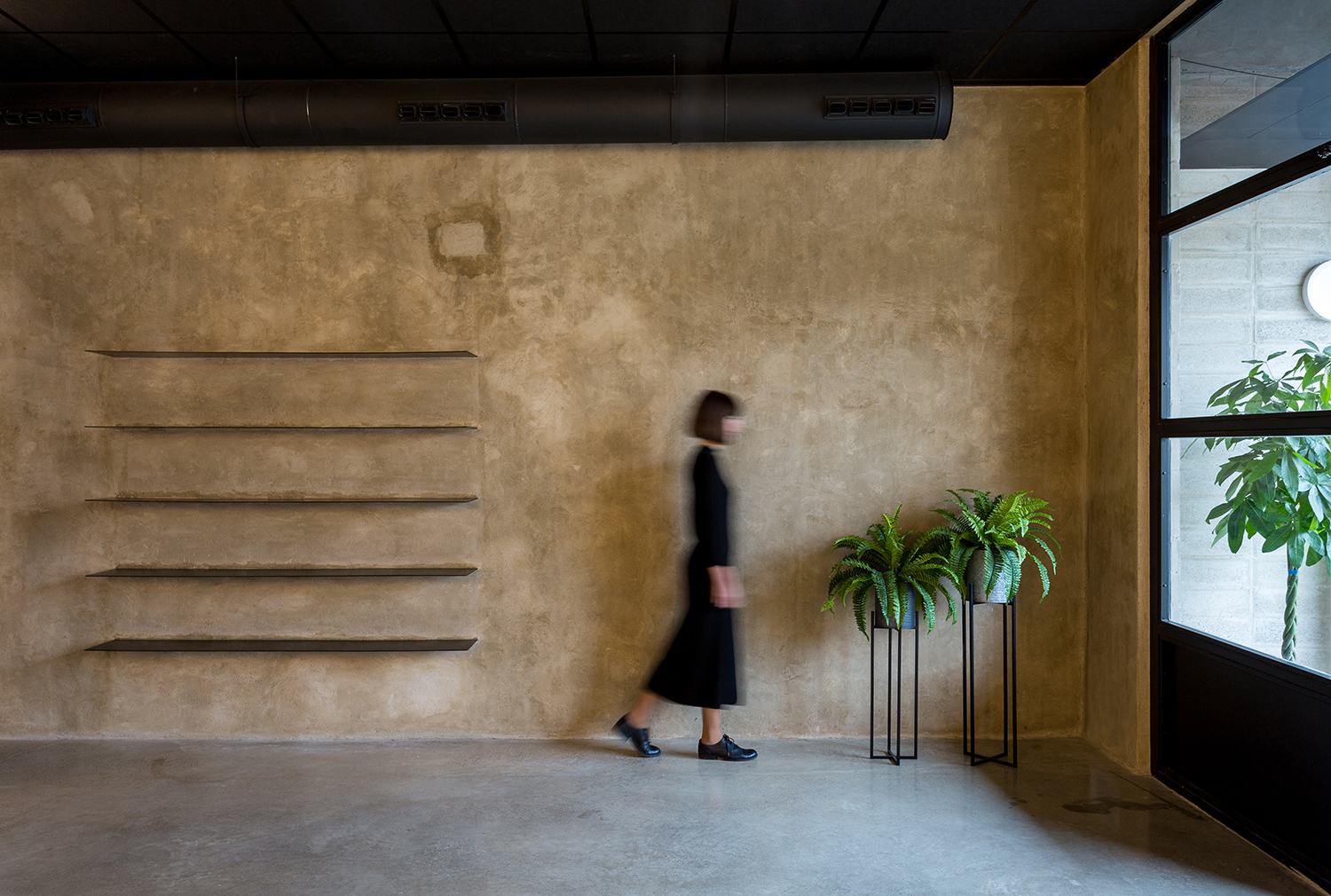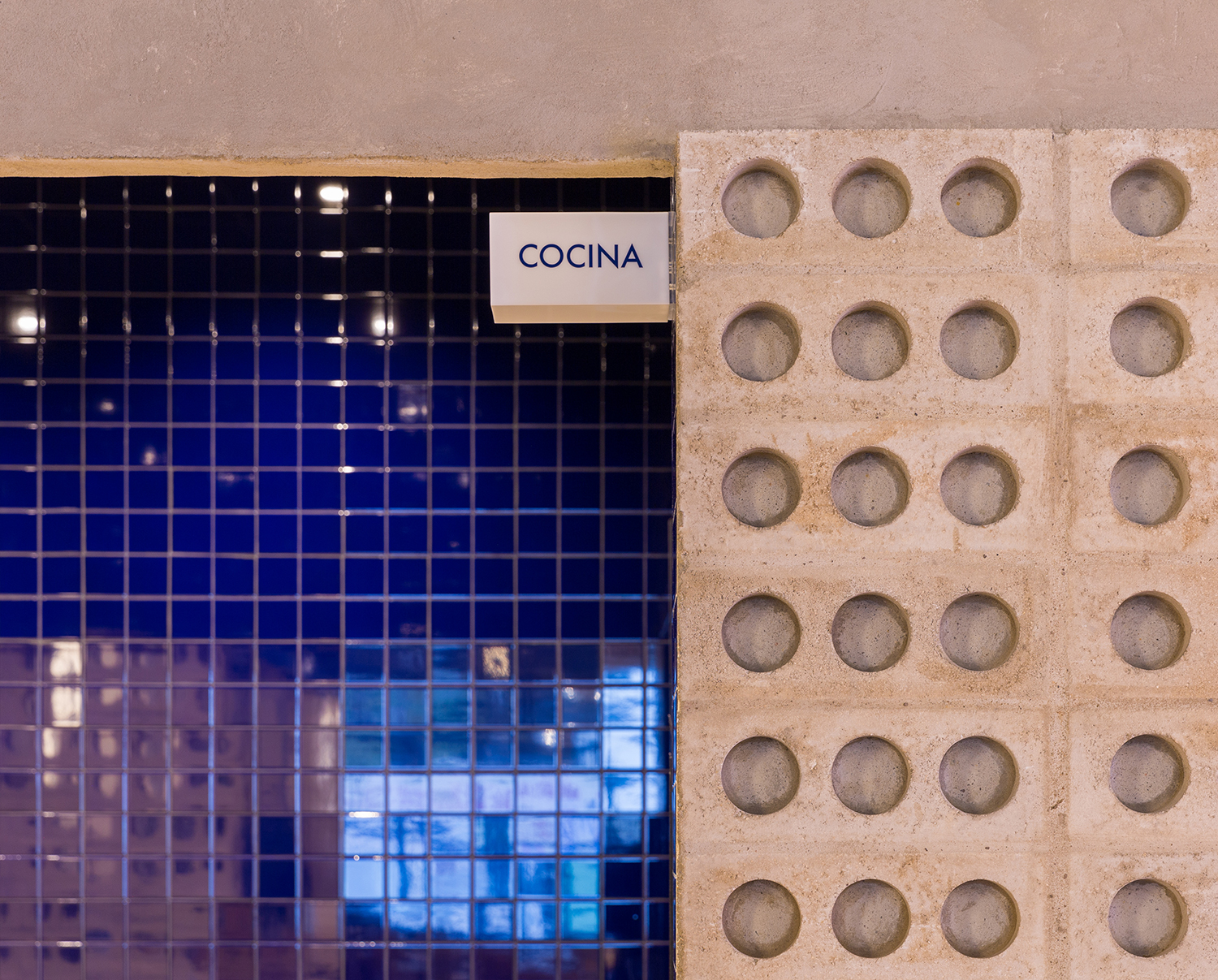这家概念餐厅由西班牙巴伦西亚北部15公里的埃尔佩格村的纳达设计,蓝色的陶瓷和木材与粗糙的水泥形成了鲜明的对比。Noma这样的烹饪先驱证明,朴实无华的用餐空间仍然可以充满活力,让游客感到放松,完全专注于食物。家庭式中餐馆IMood的老板也给了Nada类似的介绍。他们想要一个干净、开放、现代、朴实无华、注重食物的地方。在非常有限的预算内,对以前的仓库进行永久和持久的改造。
Blue ceramic and wood contrast with the roughness of the cement inside this concept restaurant recently designed by Nada in El Puig, a village 15 km north of Valencia. Culinary forerunners such as Noma have proven the power of unpretentious dining space in helping visitors to feel at ease and to keep their attention squarely on the food. Nada was given a similar brief by the owners of family-run Chinese restaurant IMood. They wanted a clear, open, modern and unpretentious place where the focus is on the gastronomy. A timeless and durable transformation of a former warehouse – all within a very limited budget.
在这些前提下,纳达团队创造了一个宁静的餐厅,与一些元素的材料形成了和谐的对比。餐厅被设计成一个开放空间,有一个大的中央酒吧,从餐厅可以看到厨房,以及街道和内部之间的过渡空间。
With these premises, Nada team has created a peaceful restaurant, with few elements where materials dialogue in an harmonious contrast. The restaurant is projected as an open space with a large central bar, a cold kitchen visible from the dining room and a transition space between the street and the interior.
材料很简单:水泥、陶瓷和木材。开放空间是由混凝土墙和地板组成的盒子。它保持了该地产过去的工业景观。在空地中央,人行道上出现了一个巨大的钴蓝色陶瓷酒吧。房间后面有一个厨房,上面全是同样的瓷砖。这种感觉就像在海底的洞穴里一样。
The materials are simple: cement, ceramic and wood. The open-plan space is maintained as a box with cement walls and floor. It maintains the past industrial look of the property. In the center of the open space a large cobalt blue ceramic bar emerges from the pavement. At the back of the room there is a cold kitchen covered entirely with the same ceramic tile. The effect perceived is similar to the sensation of being in a cave in the depths of the sea.
墙是由水泥块和相同的材料制成的,形成一个桁架。有时它似乎揭示了背后的故事。这也是对巴伦西亚典型地中海建筑的致敬。
The walls have been finished in the original color of the cement and a block made from the same material that creates a truss. It reveals what is happening behind it sometimes. This is also a gesture to the typical Mediterranean architecture present in Valencia.
在这个看似粗糙的盒子里,蓝色陶瓷有着大海般的色彩和亮度,所选的家具与其细腻和柔软形成鲜明对比。通过对日本当代建筑的回顾,也将其与餐厅的亚洲特色联系起来。榉木做的桌椅,为享受美食提供了温暖和舒适。
In the apparently rough box where the cobalt blue ceramic provides the color and brightness of the sea, the chosen furniture contrasts with its delicacy and softness. It also connects to the Asian personality of the restaurant by recalling contemporary Japanese architecture. Tables and chairs made of beech wood provide warmth and comfort to enjoy the gastronomy.
灯光是由聚光灯轨迹创建的,该轨迹有意在墙上创建光晕,从而避免灯光降低空间灵活性。另外,由博贾·埃尔南德斯和阿卡迪·马丁领导的团队在设计厕所时也冒了更大的风险。
The lighting has been created by spotlight tracks that intentionally create circles of light halos on the walls, avoiding lamps that could reduce the flexibility of the space. However, the team led by Borja Hernández and Arcadi Martín has taken a further risk within the toilets.
纳达在蓝色和紫色之间创造了一种渐变效果,这种效果在白色陶瓷上效果显著,从餐厅可以通过由聚氯乙烯板条制成的半透明工业窗帘感受到。
Nada has created a gradient effect between blue and violet that is reflected in the white ceramics and is perceived from the dining room through the translucent industrial curtain made of PVC slats.
他们还特别注意内部标志。背光标志设计用于指示某些空间的使用,并在隐含光环下分割空间。
They have also paid special attention to the interior signage. Backlit signs have been designed to indicate the use of some spaces and to zone the space under the suggestive halo of light.
















-50x50.jpg)